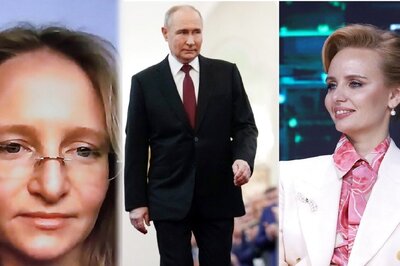
views
It is possible that imported cars, premium televisions and refrigerators, mobile handset parts and the traditional gold ornaments one purchases around Diwali could cost more than last year. And the usual price mark-ups due to inflation may not be the only reason.
Over the weekend, as Prime Minister Narendra Modi reviewed measures to cool an overheated economy, the government decided that one of the ways of doing this would be to curb “non-essential” imports.
India’s imports have been rising at a faster pace than exports in recent years, worsening our current account deficit (CAD). And placing curbs on imports of some items is part of a strategy to discourage consumption of these items. In fact, curbing such imports may be the only window the government has to get a handle on the runway rupee, which remains at a lifetime low compared to the dollar and has been one of the worst-performing currencies in Asia over the last several months.
So will the sale of mobile handsets, laptops, high-end cars, premium consumer goods or gold in the Indian domestic market lessen as import curbs take effect? Not necessarily, if demand stays elastic. Take mobile phones for example. Much of the trade in this category is import of parts from say, China, and then assembly in India.
For import curbs to work, India will have to significantly ramp up its end-to-end production capacity of mobile handsets, which cannot happen overnight. Perhaps the same logic would apply to laptops and some other electronics items. In the end, the curbs may not lead to any significant drop in imports of electronics or other “non-essential” items.
Anyway, though it is a legitimate way of tackling a volatile currency amid worsening global trade environment, placing curbs on imports is also avoidable in a market-driven economy. India at once wants to be seen as a haven of liberal economic policies and a protectionist one. This contradiction could prove hard for foreign investors to digest.
Besides, the fresh round of curbs comes just after India has already faced criticism over additional duties it levied on hundreds of items earlier in the year. Basic customs duties were raised on more than 40 categories of items in the Budget; later, duties were raised on solar imports and textile items.
Madan Sabnavis, Chief Economist at CARE Ratings, says, “The government has every right to curb imports through the tariff route but one is not sure if this will work. In the past, it has worked for gold imports.”
Why the government has become jittery of late and is mulling export curbs is largely due to the widening CAD. CAD is a measure of a country’s trade when the value of its imports is more than the value of its exports. Analysts at brokerage Kotak Institutional Equities have noted that in the first three months of this fiscal (April-June), CAD widened to $15.8 billion to reach 2.4% of GDP against $13.1 billion in the January-March quarter, when it was 1.9% of GDP. That is an increase in CAD of nearly $30 million each day of the June quarter.
The CAD has widened primarily because of a higher trade deficit at $45.7 billion ($41.6 billion in 4QFY18) as exports remained broadly flattish, while imports increased to $129.1 billion ($123.8 billion).This was led mostly by net non-oil imports being higher at $23 billion in the June quarter compared to $19.2 billion in the March quarter. So it stands to reason that this category of “non-oil” imports needs to be trimmed.
Reports suggest that the government could discourage certain imports by either imposing safeguard duties or by raising duties on certain items. The former method may be preferred as it will allow India to not fall foul of the World Trade Organisation (WTO) commitments and also keep a tight leash on importers bypassing curbs by using trade treaties with some countries.
The present situation has roots in the volatile currency market, with the Indian rupee trading at historic lows versus the dollar. Economists have explained that currency exchange rates (how many rupees to a dollar) are affected by fundamentals and external factors. The government has no control over the latter so it is trying to bring some discipline to the fundamentals, which means action on the capital and current account fronts. The government has announced a slew of measures on the capital account front, so that more dollars are infused into the economy, through routes like ECBs, FPI, Masala Bonds etc.
But these will work typically with a lag and are effective long term tools. Not all companies, for example, have ratings to borrow under the ECB route abroad or to avail of the masala bonds’ facility. Therefore the only narrow window the government has for immediate cooling of the economy is on the current account front, which is why curbs on imports of non-essential items are being talked of.
Why cannot it simultaneously boost exports? Exporters have long demanded incentives through export promotion zones, better compliance at tax refunds of the small exporters – which the government has been unable to process fast enough – and more such measures. Even if the government were to move with speed on these, there is little India can do about the global trade scenario and weakening demand. Besides, exports from India’s labour intensive sectors have been falling anyway.
The road ahead for economic stability is tricky and perhaps the government needs to do more to tackle the crisis at hand.
(The author is a senior journalist. Views are personal.)


















Comments
0 comment